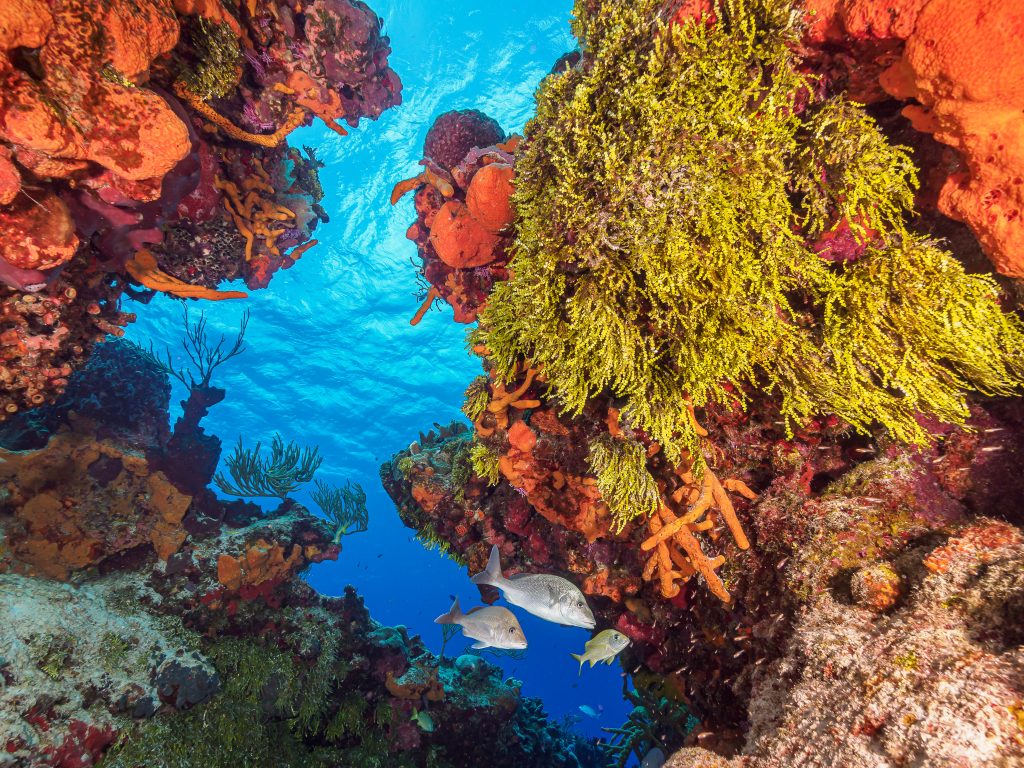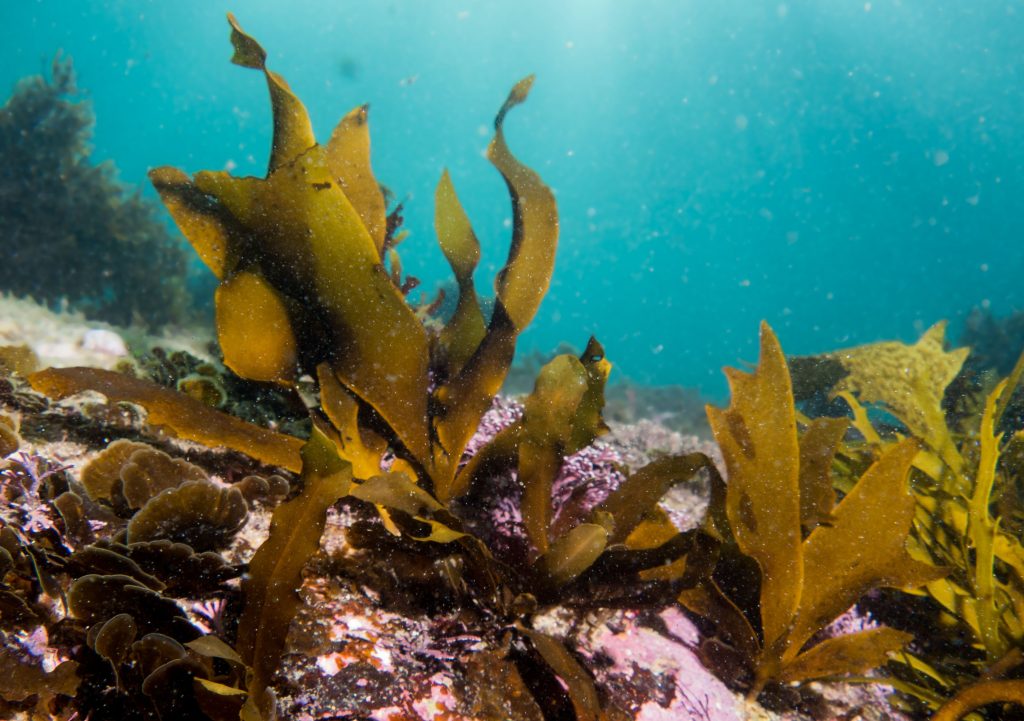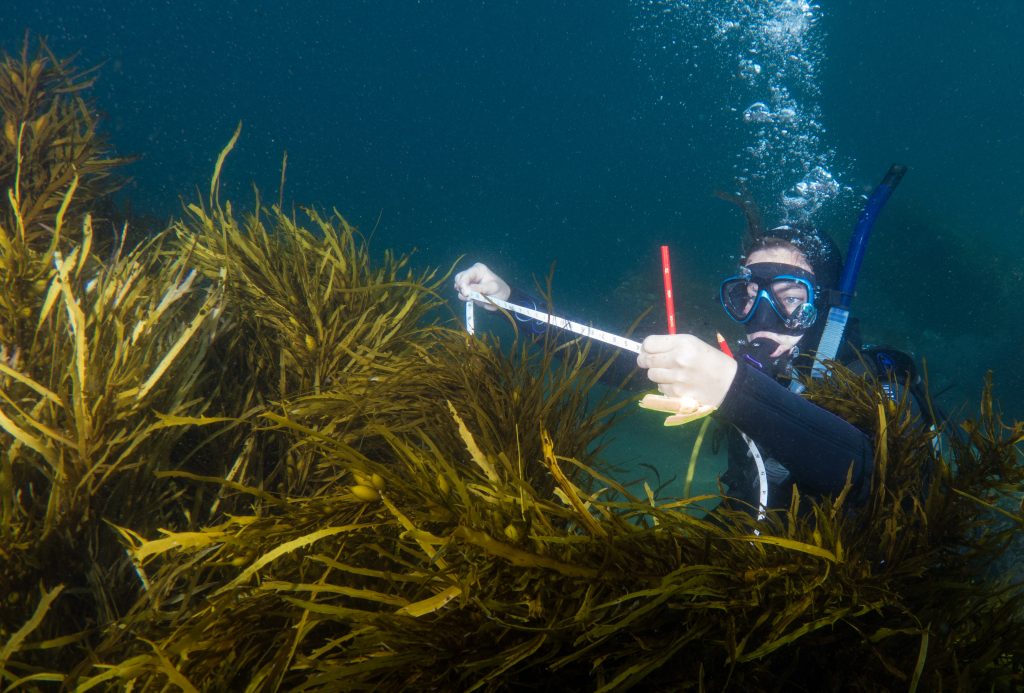
photo by Mark Paille
Not long ago, there was a beautiful forest filled with a rich diversity of wildlife. For untold centuries, this forest had flourished within a few hundred yards of one of the world’s major cities, growing in close proximity to millions of people. The forest stretched for miles, dense and lush.
And then, in just a few months, it disappeared.
Where a forest had once grown, only barren rock remained. And hardly anyone even noticed it was gone.
This was a forest of seaweed called crayweed. Swaying in the blue waters of Sydney harbor in Australia, crayweed sheltered immense populations of wildlife, not only fish but everything from microscopic krill and tiny crayfish to octopus and dolphins, shellfish, and sharks. But crayweed was completely wiped out along a 40-mile stretch of coastline due to large amounts of untreated sewage that were dumped into Sydney harbor in the mid-1980s. In only a few months, pollution had reached levels that the seaweed couldn’t survive, and it began to die off. But since the crayweed was below tide level, invisible from land, only a few divers noticed the devastation.
In the 1990s, the sewage problem was addressed and water quality rapidly improved. But it was too late. Crayweed didn’t bounce back. Fish did not return. Shrimp, crayfish, dolphins disappeared. Where once the golden crayweed had rocked back and forth in the waves, there was only a forty-mile stretch of bare rock covered with a few snails and barnacles. As the years passed, it seemed that Sydney’s crayweed forest was gone forever.
But was there a way to bring the seaweed forest back?
A group of marine biologists from the Sydney institute decided to try reforestation. Since water quality was so improved, they hoped crayweed could now survive if it was brought back to a place where it had grown before. Dr. Alexandra Campbell, a marine biologist from Sydney Marine Institute, recruited dozens of volunteers from the local community: divers, fishers, students—anyone who loved the beautiful harbor. The reforesting project was named “Operation Crayweed.”
At first it seemed to be an impossible task. Crayweed doesn’t grow in calm, quiet bays. It only grows in turbulent water, clinging to rocks that are continually washed by powerful waves. The crayweed is constantly flung back and forth by wave action, holding on by its claw-like holdfasts. Once crayweed is ripped loose from its rock, it can never grow new holdfasts.
So just moving crayweed to new locations wouldn’t work. But, the scientists wondered, what if the crayweed had “babies?” We were very skeptical about the success of our first experiments,” Alexandra Campbell admits. “To be honest, we didn’t think it would work.”
In 2011 they began a pilot program. Volunteers who knew how to scuba dive gathered small amounts of crayweed from areas along the coast where it was still abundant. Other volunteers used zip ties to attach handfuls of living crayweed to rectangles of plastic mesh that looked like doormats. The divers then carried the weedy mats underwater and bolted them to rocks a few feet below the surface of the water. Struggling against the power of the surging waves, they created a garden of twenty square meters (60 feet square—that’s a bit bigger than a king-size bed). Then they waited to see what would happen. Would the crayweed return?
Alexandra Campbell remembered the first day they went into the water to see if that first crayweed patch had survived. “It was a November day, I remember, still kind of cold in the water. We went out to have a little look at them.” Wearing wetsuits against the cold, the divers splashed into the churning water. And they could hardly believe their eyes.

photo by John Turnbull
Tiny new crayweeds were sprouting, not just on rocks, but on any surface they could grab onto. “On the cable ties we’d used to attach them, on the bolts we’d used to drill the mats into the ground,” Alexandra said. “They were absolutely everywhere!”

project crayweed – photo by John Turnbull
The “cray-bies” flourished. Soon enough they were old enough to release spores, creating a self-sustaining population. Dozens of new sites have been planted all along the stretch where crayweed used to grow.
Now Sydney Harbor is coming back to life. More than six hundred species of colorful fish flourish in the crayweed. Humpbacks and right whales frolic in the blue waters of the harbor. An annual Seaweed Festival brings in artists, poets, students, and tourists. In 2019 Sydney Harbor was chosen as a Hope Spot by Mission Blue, a not-for-profit organization that works to protect places that are critical to the health of the ocean.
And it all started with seaweed.





Recent Comments